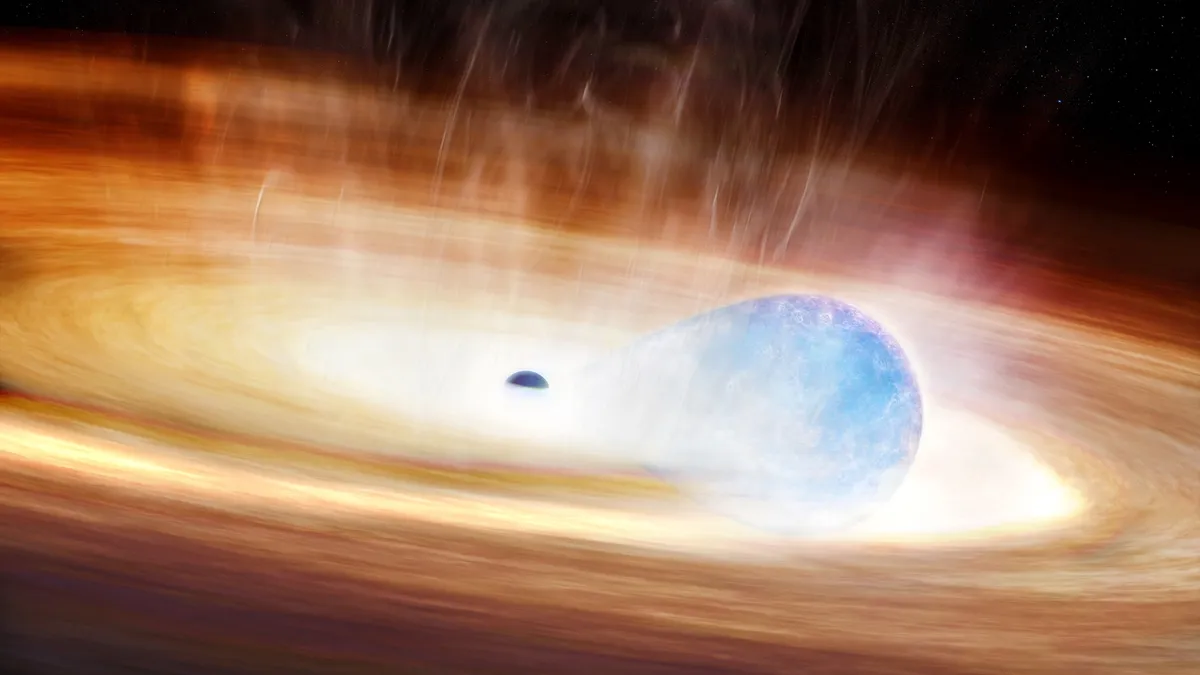
In a groundbreaking astronomical discovery, scientists may have identified a never-before-seen type of supernova with the help of an innovative, Spotify-like artificial intelligence (AI). This advanced AI was utilized to scan the skies for unusual activity, uncovering evidence of what could be a massive star exploding as it attempted to consume a nearby black hole. This stellar phenomenon, designated as SN 2023zkd, was detected in July 2023 by the Zwicky Transient Facility, a comprehensive astronomical survey located at the Palomar Observatory in California.
Unlike traditional methods of discovery, the Zwicky Transient Facility's detection of the explosion was not a mere coincidence. The facility employed an algorithm specifically optimized to locate strange night-sky phenomena. Timely identification of supernovas is crucial for understanding their formation, evolution, and eventual fading, which provides vital insights into the mechanics of these cosmic explosions. According to study co-lead authors Alex Gagliano, a postdoctoral researcher at the Institute for AI and Fundamental Interactions, and Ashley Villar, a supernova researcher and assistant professor at the Harvard-Smithsonian Center for Astrophysics, the AI detected unusual light fluctuations months prior to the actual explosion. This early alert allowed multiple observatories to gather observations across a broad spectrum of wavelengths.
While there are several hypotheses regarding the nature of the supernova, the scientific consensus suggests that the explosion originated from a massive star orbiting a black hole. As these two celestial bodies exerted gravitational forces on one another, the distance between them diminished. Ultimately, the star attempted to "consume" the black hole, resulting in an explosion due to intense gravitational stress. An alternative theory proposes that the black hole may have "spaghettified" the star, leading to its destruction. However, current data does not strongly support this latter scenario, Gagliano explained.
Through the analysis of the massive star's chemical composition, the research team discovered that the star had not completely shed its outermost layers before the explosion. This finding indicates that interactions within binary systems may be more complex than previously understood. Gagliano emphasized the importance of upcoming observations to better comprehend how the explosions of massive stars are influenced by their companion interactions, a phenomenon that remains challenging to model accurately.
The AI technology employed in this discovery is named Lightcurve Anomaly Identification and Similarity Search (LAISS). This astronomy-focused AI operates similarly to Spotify’s music recommendation algorithm, guiding astronomers to notable observations based on unique properties of light from various celestial bodies. The recent explosion caught the attention of LAISS due to its distinct light characteristics and its location, approximately 730 million light-years away from Earth. The AI compared the features of SN 2023zkd against a vast reference dataset of known astronomical objects to identify statistical outliers, which often signify rare or previously unobserved phenomena.
Once LAISS identifies an intriguing event, a bot within Slack, an instant messaging platform, flags the candidates and posts them in a dedicated channel. This efficient system allows team members to review the findings in real time, enabling astronomers to focus on the most promising and unusual discoveries. Following the explosion, the light pattern of SN 2023zkd exhibited unusual behavior. Initially, it brightened like a standard supernova before declining, but astronomers took notice when it brightened again. Archival data revealed that the star had been gradually increasing in brightness over the four years leading up to the explosion, likely due to the excess material it was shedding.
The implications of the black hole's presence were inferred from the gas and dust structure surrounding the star, along with the strange brightness fluctuations observed prior to the explosion. The role of LAISS was pivotal in helping astronomers uncover these intricate details. Gagliano noted that had the team waited for a human to flag SN 2023zkd, they might have missed the early indicators of the surrounding disk and the existence of a black hole companion. AI systems like LAISS are crucial for regularly uncovering rare astronomical phenomena, allowing scientists to go beyond mere luck to unravel their origins. The findings related to SN 2023zkd were published on August 13 in The Astrophysical Journal.